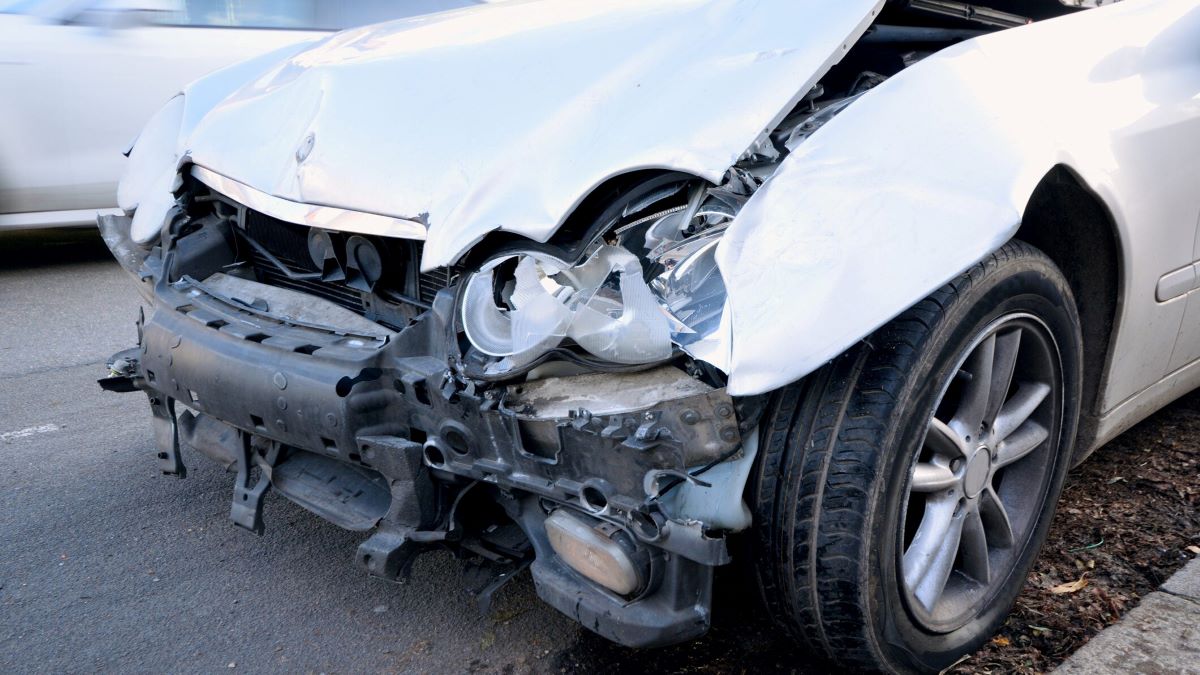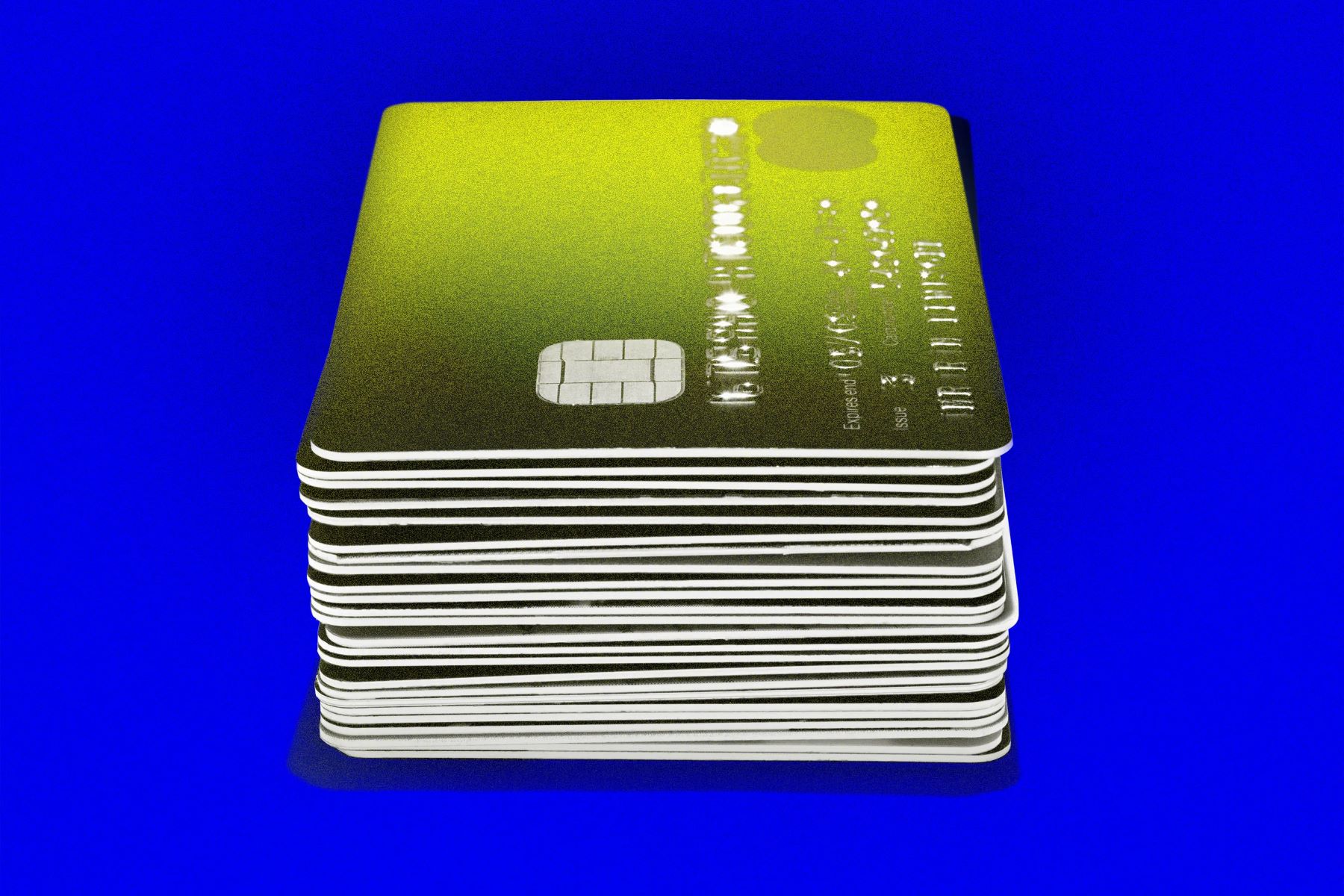

Finance
How To Transfer Insurance To A New Car
Published: November 16, 2023
Learn how to transfer your insurance coverage from your old car to a new one seamlessly. Ensure smooth transition and financial security with our expert tips on car insurance transfers.
(Many of the links in this article redirect to a specific reviewed product. Your purchase of these products through affiliate links helps to generate commission for LiveWell, at no extra cost. Learn more)
Table of Contents
- Introduction
- Step 1: Notify your current insurance provider
- Step 2: Provide details of your new car
- Step 3: Transfer your existing policy to the new car
- Step 4: Review and update your coverage
- Step 5: Pay any additional premiums
- Step 6: Obtain proof of insurance for the new car
- Step 7: Update your vehicle information with the insurance provider
- Step 8: Cancel insurance coverage for the old car (if applicable)
- Conclusion
Introduction
Transferring insurance to a new car is an essential step to ensure that you maintain continuous coverage and protect your investment. When you purchase a new vehicle, whether brand new or used, it is important to have it insured before hitting the road. Transferring your existing insurance policy to the new car allows you to avoid any coverage gaps and seamlessly transition your coverage from one vehicle to another.
This process can sometimes seem daunting, especially if you have never transferred insurance before. However, with a little knowledge and preparation, you can easily transfer your insurance policy to your new car with minimal hassle. In this article, we will guide you through the steps involved in transferring your insurance to a new car.
It is worth noting that the specific requirements and procedures may vary depending on your insurance provider and the state you reside in. It is always a good idea to check with your insurance company to understand their specific guidelines and ensure compliance with local regulations.
Now, let’s dive into the step-by-step process you need to follow to transfer insurance to a new car.
Step 1: Notify your current insurance provider
The first step in transferring insurance to a new car is to notify your current insurance provider about your intent to make the switch. Contact your insurance company and inform them that you have purchased a new vehicle and need to transfer your existing policy to the new car.
When contacting your insurance provider, be prepared to provide them with the necessary information, such as your policy number, the make and model of the new car, and the vehicle identification number (VIN). The VIN is a unique identifier for your vehicle and can usually be found on the driver’s side dashboard or door jamb.
Notifying your insurance provider promptly is crucial to avoid any gaps in coverage. If you fail to inform your insurance company and continue driving the new car without updating your policy, you could be driving uninsured, which could have serious consequences in the event of an accident or damage to your vehicle.
Once you have notified your insurance provider, they will guide you through the necessary steps to transfer your policy to the new car. This may include providing additional documentation or information, but your insurance company will outline the specific requirements.
It is important to note that if you’re purchasing the new car through a dealership, they may offer to transfer the insurance for you. While this can be convenient, it is still advisable to contact your insurance provider directly to ensure that the transfer process is complete and your coverage is in effect.
By notifying your insurance provider about your new vehicle, you are taking the first step towards a smooth transfer of your insurance policy. Next, we will explore the steps involved in providing details of your new car to your insurance company.
Step 2: Provide details of your new car
After notifying your current insurance provider about your new car, the next step is to provide them with the necessary details of your vehicle. This information is crucial for your insurance company to accurately assess the risk associated with the new car and determine the appropriate coverage and premiums.
The specific details you will need to provide include:
- Make and Model: Let your insurance provider know the make and model of your new car. This information helps them understand the characteristics and features of the vehicle.
- VIN (Vehicle Identification Number): The VIN is a unique 17-character identifier that acts as the vehicle’s fingerprint. It provides important information about the car’s manufacturing year, country of origin, engine size, and other specifications. You can typically find the VIN on the driver’s side dashboard or door jamb.
- Year of Manufacture: Provide the manufacturing year of the vehicle. This is essential for calculating the car’s depreciation and determining its value.
- Vehicle Usage: Inform your insurance company about the primary use of the car. Whether it will be used for personal purposes, commuting to work, or business-related activities. This helps them assess the risk associated with the vehicle’s usage.
- Odometer Reading: Provide the current mileage on the new car. The odometer reading helps your insurance provider understand the vehicle’s usage and estimate its wear and tear.
It is important to accurately provide these details to your insurance provider to ensure that you have the appropriate coverage for your new car. Any discrepancies or inaccuracies in the information provided can lead to consequences such as claim denials or difficulty in adjusting coverage in the future.
Once you have provided the necessary details, your insurance provider will update your policy with the information of the new car. They will then proceed with the next steps to transfer your existing policy to the new vehicle.
In the next step, we will discuss how to transfer your existing policy to the new car seamlessly.
Step 3: Transfer your existing policy to the new car
With the details of your new car provided to your insurance provider, it’s time to transfer your existing policy to the new vehicle. This step ensures that your coverage extends seamlessly to your new car, avoiding any gaps or overlaps in insurance.
When transferring your existing policy, your insurance company will update the relevant information, such as the vehicle details and VIN, to reflect the new car. They will also adjust the coverage and premiums as needed based on the characteristics and risk associated with the new vehicle.
Here are the key aspects to consider during the policy transfer process:
- Policy Effective Date: Determine the start date of the coverage for your new car. This can typically be the same date as your purchase or your request to transfer the policy.
- Pro-rated Premiums: If there is a difference in the premium between your old and new car, your insurance company will calculate the pro-rated premium based on the remaining coverage period. This means you may need to pay a portion of the premium upfront or receive a refund for any unused portion of the premium.
- Policy Endorsements: Your insurance company may issue an endorsement to your existing policy to reflect the new car’s details and coverage changes. This endorsement serves as an official document that confirms the transfer of your insurance to the new vehicle.
It is essential to review the policy endorsement and ensure that all the details, including the vehicle information, coverage amounts, deductibles, and any additional endorsements, are accurate and reflect your requirements.
During this step, it is also a good idea to review your coverage to ensure it aligns with your needs for the new car. Consider factors such as liability coverage, comprehensive and collision coverage, and any additional coverage options that may be relevant for your specific situation.
Reviewing your policy gives you the opportunity to make any necessary updates or additions to your coverage. It’s important to have adequate protection in place in case of accidents, theft, or other unforeseen circumstances.
Once the policy transfer is complete and all necessary updates have been made, you can proceed to the next step – reviewing and updating your coverage.
Step 4: Review and update your coverage
With the transfer of your existing policy to the new car, it is important to take the time to review and update your coverage as needed. This step ensures that you have the appropriate level of insurance protection for your new vehicle.
Here are some aspects to consider when reviewing and updating your coverage:
- Liability Coverage: Liability coverage is essential and typically required by law. It protects you financially if you cause damage to someone else’s property or injure someone in an accident. Review your liability coverage limits and make sure they provide sufficient protection.
- Comprehensive and Collision Coverage: Comprehensive coverage protects against damage caused by incidents other than collisions, such as theft, vandalism, or natural disasters. Collision coverage pays for repairs or replacement if your vehicle is damaged in a collision. Determine if you need these coverages based on the value and condition of your new car.
- Deductibles: A deductible is the amount you will pay out of pocket before your insurance coverage kicks in. Consider your comfort level with deductibles and adjust them accordingly. A higher deductible can lower your premiums, but make sure you can afford the out-of-pocket expenses if an accident occurs.
- Additional Coverage Options: Explore any additional coverage options that may be relevant for your new car. For example, if you have a loan or lease on the vehicle, you may want to consider gap insurance to cover the difference between the car’s value and what you owe in case of a total loss.
- Bundle Coverage: If you have other insurance policies, such as homeowners or renters insurance, consider bundling them with your auto insurance. This can lead to cost savings through multi-policy discounts.
Reviewing your coverage ensures that you have the right level of protection for your new car and provides peace of mind while you’re on the road. It’s also a good opportunity to discuss any concerns or questions you may have with your insurance provider.
Remember that insurance needs can change over time, so it’s a good idea to review your coverage periodically, not just when transferring your policy to a new vehicle. By proactively evaluating your coverage, you can ensure that you have adequate protection in place to safeguard your investment.
Once you have reviewed and updated your coverage, the next step is to address any additional premium payments that may be required. Continue reading to learn more about this important step.
Step 5: Pay any additional premiums
When transferring your insurance policy to a new car, there may be additional premiums to pay based on the updated coverage and the characteristics of your new vehicle. It is important to address these additional payments to ensure that your policy remains active and fully in effect.
Here’s what you need to know about paying any additional premiums:
1. Premium Adjustment: Your insurance provider will recalculate the premiums based on the updated information, such as the make and model of your new car, and any changes made to your coverage. This may result in either an increase or decrease in your premiums.
2. Pro-Rated Premium: If the coverage period for your new car differs from your existing policy, your insurance provider will typically pro-rate the premium accordingly. This means that you will only pay for the portion of the coverage period that applies to your new vehicle.
3. Billing Options: Your insurance provider will provide you with various billing options for the additional premiums. You can choose to pay the full amount upfront or opt for installment payments. Discuss the available options with your provider to determine the best approach for your financial situation.
4. Payment Deadlines: Ensure that you are aware of the payment deadlines set by your insurance provider. Missing these deadlines may result in a lapse in coverage, leaving you without insurance protection for your new car.
5. Method of Payment: Your insurance provider will give you different payment methods, such as online payment, bank transfer, or mailing a check. Choose the payment method that is most convenient for you.
6. Confirmation of Payment: Once you have made the additional premium payment, make sure to receive confirmation from your insurance provider. This confirmation serves as proof of payment and ensures that your policy remains active.
By promptly addressing any additional premium payments, you can ensure that your insurance coverage for the new car is fully in effect. This step is crucial to maintain the financial protection and peace of mind that insurance provides.
After paying any additional premiums, it’s essential to obtain proof of insurance for the new car. Continue reading to learn more about this important step.
Step 6: Obtain proof of insurance for the new car
Obtaining proof of insurance for your new car is a crucial step in the process of transferring your policy. Proof of insurance serves as evidence that you have the required coverage in place and can provide it when necessary, such as during registration, vehicle inspections, or traffic stops.
Here’s what you need to do to obtain proof of insurance for your new car:
1. Insurance ID Card: Your insurance provider will issue an insurance ID card that includes key information about your coverage and the new vehicle. This card typically contains details such as the policy number, the effective dates of coverage, and the vehicles covered under the policy. Keep this card in your car at all times to provide proof of insurance when required.
2. Electronic Proof of Insurance: Some states allow for electronic proof of insurance. This means that you can keep a digital copy of your insurance ID card on your mobile device and present it as proof of coverage when needed. Check the regulations in your state to ensure electronic proof is accepted.
3. Certificate of Insurance: In some cases, you may need to provide a certificate of insurance as proof of coverage. This is a document provided by your insurance company that shows the specific coverage details for your new car. It may be required for certain transactions, such as financing or leasing a vehicle.
4. Additional Requirements: Depending on your state or local regulations, there may be additional requirements for proof of insurance, such as specific forms or documentation. Make sure to familiarize yourself with these requirements and fulfill them to ensure compliance.
5. Keep a Digital Backup: It’s a good practice to keep a digital backup of all your insurance documents. Take a photo or scan your insurance ID card and store it in a secure location, such as a cloud storage service or password-protected folder. This ensures that you always have a backup copy accessible, even if the physical ID card is lost or damaged.
By obtaining and safely storing proof of insurance for your new car, you can have peace of mind knowing that you can readily provide evidence of coverage whenever required. This documentation serves as a legal requirement and safeguards you from potential penalties or fines for driving without insurance.
Now that you have obtained proof of insurance, it’s important to update your vehicle information with your insurance provider. Continue reading to learn about the next step in the process.
Step 7: Update your vehicle information with the insurance provider
Once you have transferred your insurance policy to your new car, it is important to update your vehicle information with your insurance provider. This step ensures that your insurance records are accurate and up to date, reflecting the correct details of your new vehicle.
Updating your vehicle information with your insurance provider involves the following steps:
- Contact your insurance provider: Reach out to your insurance company and inform them that you need to update your vehicle information. They will guide you through the process and provide you with any necessary instructions or forms to complete.
- Provide the updated details: Be prepared to provide your insurance provider with the updated information about your vehicle. This includes the make and model, the VIN (Vehicle Identification Number), the year of manufacture, and any other relevant details requested by your insurance company.
- Submit any required documentation: Your insurance provider may require you to submit documentation related to your new car, such as a copy of the purchase agreement or vehicle registration. Make sure to gather and provide these documents as requested.
- Review the updated policy: After updating your vehicle information, carefully review the updated policy documents provided by your insurance company. Ensure that all the details, including the vehicle information, coverage amounts, deductibles, and any additional endorsements, are accurate.
- Address any discrepancies or concerns: If you notice any discrepancies or have concerns about the updated policy, promptly reach out to your insurance provider for clarification or resolution. It’s essential to have a clear understanding of the coverage and terms of your policy to avoid any surprises in the future.
Updating your vehicle information with your insurance provider allows them to have accurate records and ensures that your coverage aligns with your new car. Failing to update this information may lead to potential issues, such as claim denials or difficulties in adjusting coverage if needed.
After completing this step, it’s important to address the cancellation of insurance coverage for the old car, if applicable. Continue reading to learn more about the final step in the process.
Step 8: Cancel insurance coverage for the old car (if applicable)
If you have sold or transferred ownership of your old car, it is important to cancel the insurance coverage for that vehicle. Continuing to pay premiums for a car you no longer own can be a waste of money. Moreover, it’s crucial to remove the vehicle from your insurance policy to avoid any confusion or potential liability issues.
Here’s what you need to do to cancel insurance coverage for the old car:
- Inform your insurance provider: Contact your insurance company and inform them that you have sold or transferred ownership of your old car. Provide them with the details of the transaction, including the new owner’s information and any necessary documentation.
- Provide proof of sale or transfer: In most cases, your insurance provider will require proof, such as a bill of sale or transfer of ownership document, to verify that you no longer own the vehicle.
- Retrieve any remaining funds: If you have already paid for the insurance coverage period that extends beyond the sale or transfer date, inquire with your insurance provider about any remaining premium refund that you may be eligible for.
- Cancellation process: Follow the procedures outlined by your insurance provider to cancel the coverage for the old car. This may involve signing specific forms or providing additional documentation as required.
- Confirmation of cancellation: Once the cancellation is processed, make sure to ask for confirmation from your insurance provider. This serves as proof that the coverage for the old car has been terminated.
Canceling the insurance coverage for the old car is essential to avoid confusion and prevent unnecessary expenses. It also allows your insurance provider to update their records accurately and ensures that you maintain the appropriate coverage for your new vehicle.
It’s important to note that if you have not sold or transferred ownership of the old car and plan to keep it, you should maintain insurance coverage. Adjust your policy as needed to reflect the change in usage or consider alternative options such as storage insurance if the vehicle will not be in regular use.
With the completion of the cancellation process, you have successfully transferred your insurance to your new car and taken the necessary steps to update your coverage accordingly. Now you can confidently enjoy driving your new vehicle with peace of mind.
Conclusion
Transferring insurance to a new car is an essential process that ensures you maintain continuous coverage and protect your investment. By following the step-by-step guide outlined in this article, you can easily transfer your existing policy to your new vehicle and ensure a seamless transition without any gaps in coverage.
Remember to notify your current insurance provider about the purchase of your new car, providing them with all the necessary details of the vehicle. Take the time to review and update your coverage to ensure it aligns with your needs and provides adequate protection.
Address any additional premium payments that may be required, and obtain proof of insurance for your new car. Keep the insurance ID card or certificate of insurance easily accessible in your vehicle as proof of coverage.
Don’t forget to update your vehicle information with your insurance provider to accurately reflect the new car and its associated coverage. If you have sold or transferred ownership of your old car, ensure that you cancel the insurance coverage for that vehicle to avoid unnecessary expenses and liability issues.
It’s important to stay proactive about reviewing and updating your insurance coverage regularly, not just during the process of transferring insurance to a new car. By doing so, you can ensure that you have the right level of protection in place for your ever-changing needs.
Remember to consult with your insurance provider to understand their specific requirements and guidelines throughout the transfer process. By following these steps and staying informed, you can navigate the process of transferring insurance to a new car with confidence, knowing that you have the proper coverage to keep you protected on the road.














